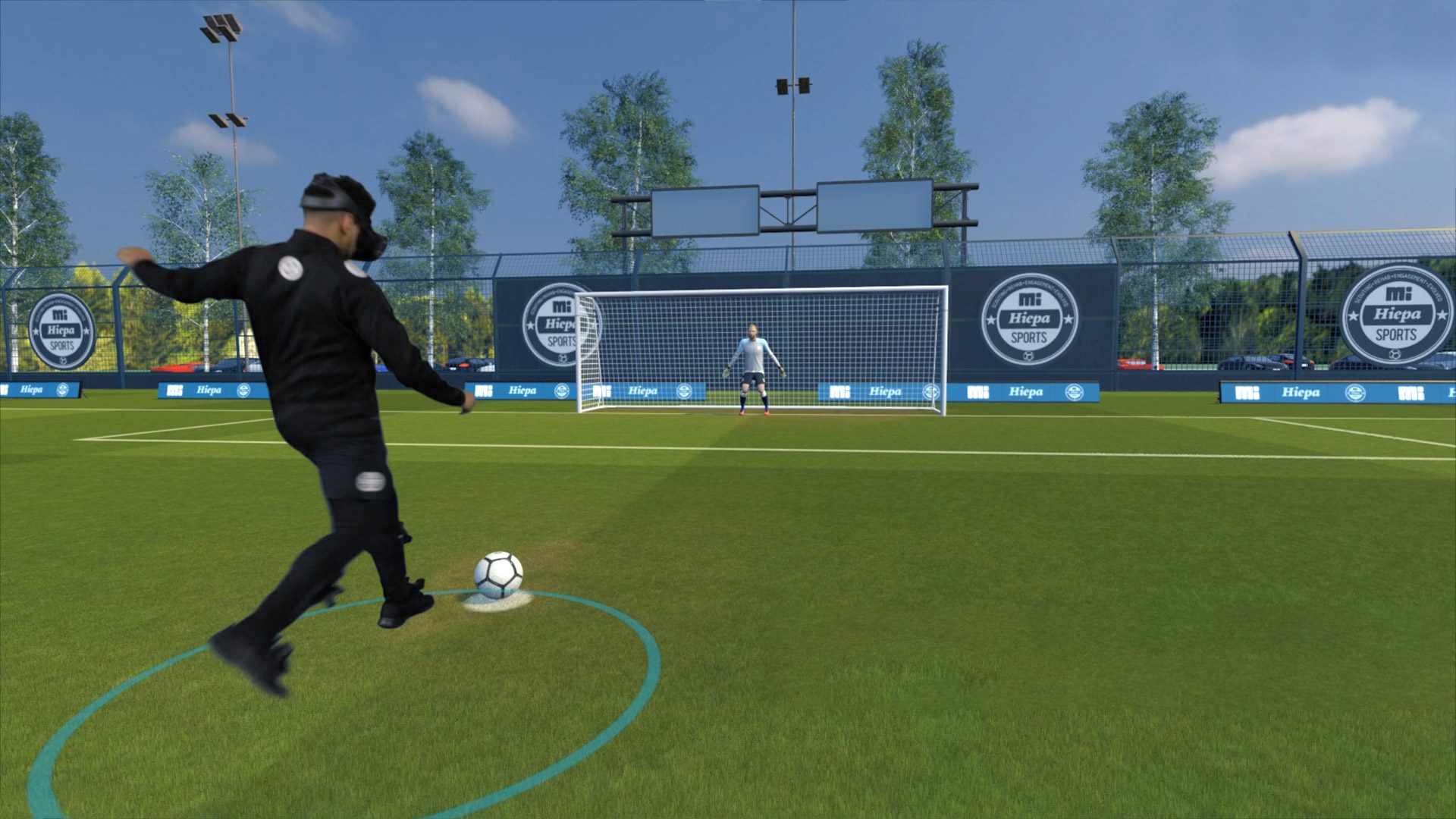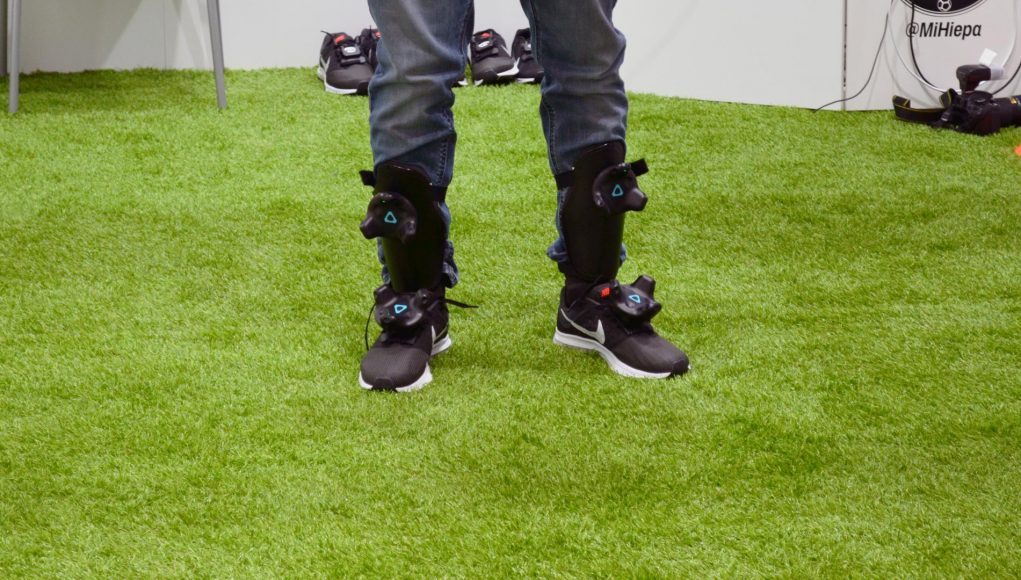This year’s Mobile World Congress (MWC) in Barcelona is underway, and while the event’s main focus is inevitably on the newest batch of smartphones to hit the market this year, VR’s presence can definitely be felt. Visiting HTC’s booth, we got a chance to see the newer Vive Tracker in action with Valve’s 2.0 SteamVR Tracking system.
Nearly a year old now, the first generation Vive Tracker contained SteamVR Tracking 1.0 sensors, the same seen in the original HTC Vive which allows it to be positionally tracked by the SteamVR (AKA Lighthouse) Tracking system. HTC had debuted the new Vive Pro, which uses 2.0 sensors, but we hadn’t seen the Vive Tracker with the newer sensors until now.

HTC has updated its Vive Tracker to contain the 2.0 sensors, showing them off with UK-based sports training and rehab company Mi Hiepa Sports. In the soccer experience, four trackers were used to track the user’s legs and feet, allowing the platform to run the user through soccer drills seen through the Vive Pro. The drills gather data about the player’s performance to create a baseline for improvement. Adam Dickinson, development director at Mi Hiepa Sports, expects that the expanded tracking range of SteamVR Tracking 2.0 will make the platform more useful for soccer clubs.
Neither the original HTC Vive nor the first generation of Vive Trackers work with the newer SteamVR Tracking 2.0 base stations, meaning the next generation of Vive Trackers were bound to come sooner or later. HTC isn’t talking pricing or availability of the newer Trackers just yet (though the originals launched for $100 each), but say they are working with developers who have been developing for the original Trackers to make sure they can get what they need going forward. HTC began selling the original Vive Tracker to consumers only a few months ago.
Additional reporting by Ben Lang







